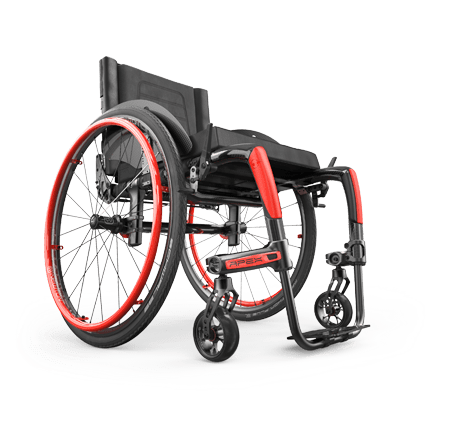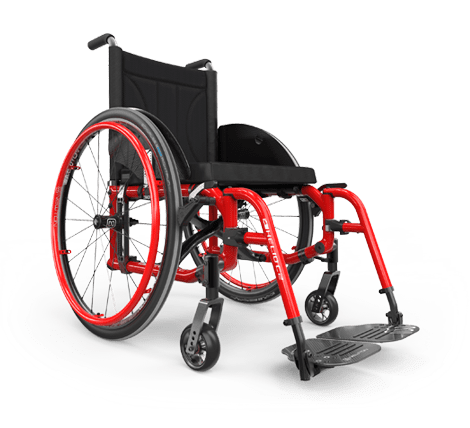(If you haven't, make sure to also read Part I of our Preparing for your evaluation series.)
Step one is discussing your mobility and functional goals with the team; this cannot be underestimated. It is important for the entire team to know the goal to ensure the equipment recommendations bridge the gap between the evaluation findings and the goals.
Step two in ensuring the best outcome is a thorough mat evaluation. Make sure to get OUT of your existing equipment, and have the therapist and supplier complete the evaluation out of your chair. It will allow for the best way to get all the data required to construct the best suggestions for equipment selection. Also, it will give the therapist what is necessary to write the medical justification for the mobility base and the many components that go into it.
Once the mat evaluation and goal setting are complete, an equipment trial is recommended. Having a wheelchair demo to trial closely resembling what will be ordered is ideal but may not always be available. However, trying something that is closely configured to what was discussed will give you the best feel for how it will work out, especially if this is your first time having a custom wheelchair evaluation. If something suitable is not available during the evaluation, you can set up another appointment to trial the requested equipment, either at the clinic or potentially within your home.
Before leaving that initial evaluation appointment, be sure to discuss additional components and options that meet your goals but are potentially “not funded”. Unfortunately, as funding continues to shrink, technology keeps advancing and exploding forward with solutions for almost any goal. Don’t let funding limit your access. Find out how your funding works, and if you are allowed to pay the difference for items that may not be covered. Don’t rule out having a fundraiser to pay for these items if it means your chair will suit your lifestyle best.
Now comes the hardest part of the entire process for you as the end user…waiting. Let’s see what goes into procuring funding for the equipment to better understand how your dream team is spending this time.
Paperwork
The therapist has documentation to prepare that will paint a picture for the funding source of your needs, goals, and medical justification. This is no easy task, and some therapists spend hours of their own time, apart from working hours, to complete and perfect these. This shows how dedicated they are to making sure you get what you need. Even after writing an amazing novel of documentation (some letters and evaluations can be upwards of 5-10 pages), a funding source might STILL find a reason to deny it. Then, the therapist may have to write additional information.
Coming from a therapist who wrote hundreds of these letters, it can be frustrating when they come back asking for additional information but know this is just part of the process. So, build in extra patience and trust that your therapist is building a strong case for you.
The supplier and CSR (Customer Service Representative) have additional paperwork to prepare as well as collecting all the needed documentation from physician and therapist. This team then ensures everything is correct before submitting to the funding source.
Time
Continuing to be patient and persistent throughout the wait is going to help you pass the time. Focus on what you can do to assist the process moving forward. It is hard to think that you have no control. Whether working as a clinician or supplier, I would always tell my clients to follow up with the supplier about every two to three weeks.
By phone or online portal, suppliers offer various ways for you to stay engaged and follow your order. It will help you to know and understand where it is in the process. Just remember everyone is doing their best, even when it seems like nothing is happening. Offer to follow up with a physician or therapist if the supplier needs help getting documentation back from them.
Approval and Delivery
The excitement is high, you’ve gotten the approval, equipment has been ordered, and it is now ready for delivery. Best practice is to accept delivery with your original dream team, this isn’t always available, but it never hurts to ask.
Even with the most precise set up, there will probably need to be tweaks and adjustments at delivery. This is the process to dial that chair in to meet your goals and allow for maximum performance out of your equipment. Don’t skip this step. Move around in the equipment; try it on different surfaces, ramps, and grades. Your new chair should feel like an extension of yourself. Don’t settle for just OK when the supplier and therapist can fine tune for optimum performance. Focus on your goals and work together with your team to meet them.
After Delivery
Live your life and enjoy your wheelchair. Ensure that everything feels right. In the excitement of delivery day, you might not catch subtle things that need to be adjusted. Don’t hesitate to contact the supplier to help with those changes. The wheelchair should be an extension of you and allow you mobility at the highest level of performance. Don’t settle for just OK, small adjustments can make a big difference. You are worth the time and effort to ensure the wheelchair meets your needs.
Understand that you might need adjustments between when the chair is delivered and before you are eligible for your next new wheelchair. Don’t hesitate to reach out to your dream team with questions. They can help you to decide what is needed at that point. Remember your equipment should be an extension of you and should require little effort to use. If something becomes difficult or painful, seek out your team. The solution may be as simple as a minor adjustment.
Finally, the best way to ensure the longevity of your equipment is to keep it clean and maintained.
If you are interested in an ultralight, high performance, folding or rigid wheelchair that maximizes efficiency and style, be sure to ask your therapist about the Motion Composites wheelchairs. If you are going through your very first evaluation but aren’t sure where to begin, use our online tool to start the process with confidence.







